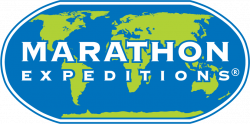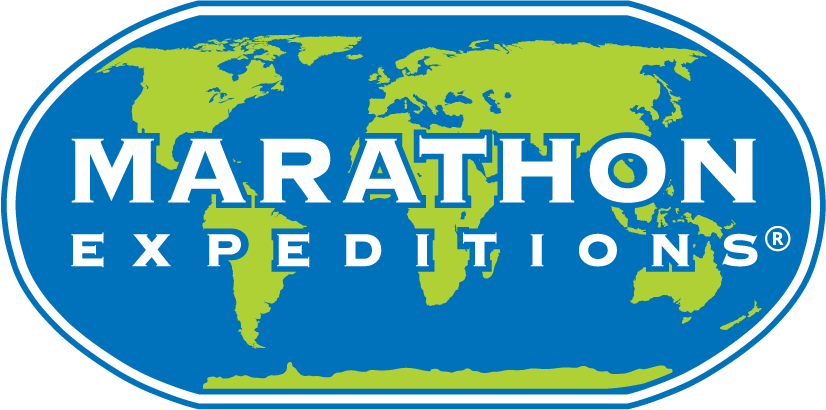Traveler's FAQ
All cruise lines have cancellation penalties that are dependent on when you cancel – the closer to departure date the higher the penalty. Cancellation penalties are the amount not refunded if you cancel the cruise. Each cruise line has these penalties listed on your cruise application. Please read these carefully. You will receive a quote for cancellation/medical insurance with your cruise statement upon booking.
Travel insurance is offered to protect you from unforeseen situations which would prevent you from traveling or which occur while on your trip. The policy is composed of 2 parts – Cancellation coverage and Medical coverage.
- The Cancellation feature is designed to protect your travel investment should you need to cancel prior to departure for an emergency illness or injury. It applies not only to you and your travel companion, but to anyone in your immediate family – parents, siblings, children, etc… whether they are traveling or not. In addition, coverage is provided for events such as job layoff or termination, natural disasters, jury duty, medical quarantine, or terrorist incidents. You also receive travel delay, loss to baggage and baggage delay benefits.
- The Emergency Medical benefit provides coverage should accident or illness strike while traveling, which may require an emergency air ambulance to return home. Note that many health insurance policies do not provide coverage outside the U.S.
Some guests state that they never take out insurance. We caution them to reconsider as it is always difficult to forego all of the money paid for a trip when an unfortunate incident occurs which prevents you from going. Cruise lines will not offer any financial consideration or date change options for emergency situations, and will not refund any funds beyond the penalty schedule.
We have worked with iTravelInsured for six years, and know them as a respected provider in the industry. We have found them fair, honest and quick to pay claims without undue issues.
Please see the Custom Travel Protection terms (this should be hot linked) for details. Should you have any questions regarding travel insurance, or any issue with this cruise, please do not hesitate to contact our group department.
Please see the page relating to Cancellation/Medical insurance.
Your ship accepts credit cards, cash, and travelers checks for payment of on-board extras such as alcohol, shore excursions, gift shop and boutique purchases. The ship is “cashless” aboard, where an imprint of your credit card or a cash deposit is taken at the beginning of your cruise. The last night you will receive a bill outlining your charges. If you are using a credit card your charges will be automatically billed to the card. If you are paying in cash, you must clear your account at the end of the cruise. This can be time consuming, so if possible, use a credit card as it is most convenient.
All tips for dining room personnel and room stewards have been included in your cruise package.
Other personnel, such as bar waiters, bellboys, and deck stewards may be tipped as service is rendered. Note that there is typically a 15% gratuity added to all bar tabs not covered under the complimentary drink program.
All tips for dining room personnel and room stewards have been included in your cruise package.
Other personnel, such as bar waiters, bellboys, and deck stewards may be tipped as service is rendered. Note that there is typically a 15% gratuity added to all bar tabs not covered under the complimentary drink program.
All future correspondence will go to the address on your confirmation. Address changes must be received in writing. There is a booking number (99-xx) on your confirmation. Please write this number on all checks. It is helpful to include your ship and sail date on any correspondence. A good daytime phone number and email address is important if we need to reach you about your booking. Any changes in your reservation including category, number of people in cabin, names in cabin, additions & deletions to cabin, etc, MUST be received in WRITING.
Our entire group will be booked in early dining. Everyone from the group will sit together in the dining room.
On this cruise, there will be table changes each night throughout the cruise. This is so that everyone has the opportunity to dine with other members from the group as well as featured speakers.
You will receive your Customized Itinerary and Know Before You Go booklet approximately 30 days prior to sailing. Packets will be sent to the address indicated on your cruise application. If you prefer to have your packet delivered elsewhere please contact The Cruise Authority, no less than 45 days prior to departure.
A passport will be required for each person joining this cruise. Please see Passport Requirements page for complete information.
If you consider your cruise ship a floating resort that transports you from one port to another as an added bonus, everything will be placed in proper perspective. This ship offers individual safes in each cabin. When visiting the ports of call, we highly recommend that you utilize your safe, taking only essential credit cards, minimal cash and jewelry.
The elements are no friend to your camera. Sea spray can damage lenses and sand can cause irreparable damage to other parts of the camera. Use caution – don’t leave your camera sitting out in the sun on deck or on the beach. We recommend that you bring along enough film, batteries and memory cards for the duration of your cruise. These items are more expensive on board or in port than at home.
This has become less of a problem during the past several years as all cruise ships are now equipped with stabilizers to lessen the roll of the ship. Once the ship is underway, these “wings” swing out into place and allow the ship to move smoothly through the ocean.
If you do have problems, try one of the following:
- Dramamine or Bonine – These medications tend to make you drowsy. It is not a good idea to combine them with alcohol. Consult a physician about these medications and about other potential side effects.
- Shots – Available from the ship doctor. These are for extreme cases of motion sickness and take effect very quickly. There is typically a $15 charge.
- TransDerm Scop Patches – See your doctor for a prescription for this product. Note that there are some side effects.
- Sea Bands – A non-medicated method to alleviate motion sickness. The bands work under the principle of accupressure.
- Relief Bands – Brand new technology, which relieves all forms of nausea. A unit which resembles a watch, sends a slight electrical charge through your system.
Cruise ships have truly become floating resorts, as more and more facilities are added to keep passengers healthy and happy. Today there are workout facilities with the latest exercise equipment, glamorous spas at sea, aerobics and other dance classes, whirlpools, saunas and massage therapy. In addition to the traditional shuffleboard many ships offer table tennis, jogging tracks, basketball, paddle tennis, volleyball, golf ball driving and simulators.
Quiet areas abound. The library is a good place to start – you can browse through the latest best-sellers, or check one out to keep for the duration of your cruise.
If you intend to do nothing on board but find a nice watering hole, you’re in the right place. There are plenty of locations on board and you should find a favorite spot in no time. You might enjoy a poolside bar or a piano bar.
ABBREVIATIONS
MS – Motor Ship
MTS – Motor Turbine Ship
MV – Motor Vessel
TSS – Turbine Steamship
SS – Steamship
USS – United States Ship
HMS – Her Majesty’s Ship (England)
RMS – Royal Mail Ship (England)
ABEAM – anything perpendicular to the structure of the ship; off the side.
AFT – toward the rear of the vessel or to the stern.
AMIDSHIPS – in the middle of the vessel.
BALLAST – weight placed in the ship to keep her on an even keel when empty.
BEAM – width of ship at the widest point.
BEARING – compass direction expressed in degrees.
BERTH – nautical term for bed in your cabin or where vessel docks in port.
BOW – the forward part of the ship.
BRIDGE – ship’s command center located above and forward of the passenger areas. Passengers are sometimes admitted with special invitation.
BULKHEAD – wall-like construction inside a vessel for subdividing space.
DECK – each floor of a ship.
DISEMBARK or DEBARK – to get off a ship
DRILL – any exercise ordered by the captain, like the lifeboat drill on the first evening out.
EMBARK – to board a ship.
FATHOM – a measure of six feet; used in determining the depth of water by soundings.
FLAGS – ships talk to each other with flags in an international code of signals that all nations understand. While the flag hoisted on a private yacht might say “Come over for a drink,” the signals on a large ship leaving port will show if a pilot is on board and what type of cargo is carried. Signal flags are never flown at sea, except when a vessel is in distress. The ship’s country of registry is flown from the stern, and her country of destination appears from the yardarms of the foremast.
FREE PORT – a port not included in customs territory, or one that is free from import taxes. St. Thomas in the US Virgin Islands is a free port.
GALLEY – the kitchen.
GANGWAY – the bridge between ship and shore. Also called the gangplank as historically it was nothing more than a plank of wood.
GROSS REGISTERED TON – a measure of the size of a ship in terms of displacement. One hundred cubic feet equals one gross registered ton.
HELM – the entire steering apparatus of the ship.
KNOT – a unit of speed. One knot equals one nautical mile (6080.2 feet), or approximately 1.15 land miles per hour. The speed of a vessel is measured in knots.
LEAGUE – a unit of distance. In English-speaking countries, a league is 3.45 nautical miles.
LEEWARD – the direction toward which the wind blows.
PILOT – a representative of the local port authority who comes aboard ship to aid in the final arrival.
PITCH – the rise and fall of the ship in the water.
PORT – the left side of the ship (when looking forward) also indicated by the red navigational light.
PORTHOLE – the round window on a ship.
REGISTRY – certificate of ownership.
ROLL – the sideways motion of the ship.
SHE – ships are always considered members of the female gender.
STABILIZER – a retractable fin extending into the water on either side of the vessel to ensure smooth sailing.
STARBOARD – the right side of the ship (while looking forward), also indicated by a green navigational light.
STERN – the rear section of the vessel
TENDER – a small vessel, sometimes a lifeboat, use to carry passengers from ship to shore and vice versa.
THRUSTERS – many new vessels have propellers mounted in the hull sideways so that the ship can pull away from the dock under its own power.
WAKE – the trail a ship leaves in the water.
WEIGH ANCHOR – to raise anchor and prepare to get underway


